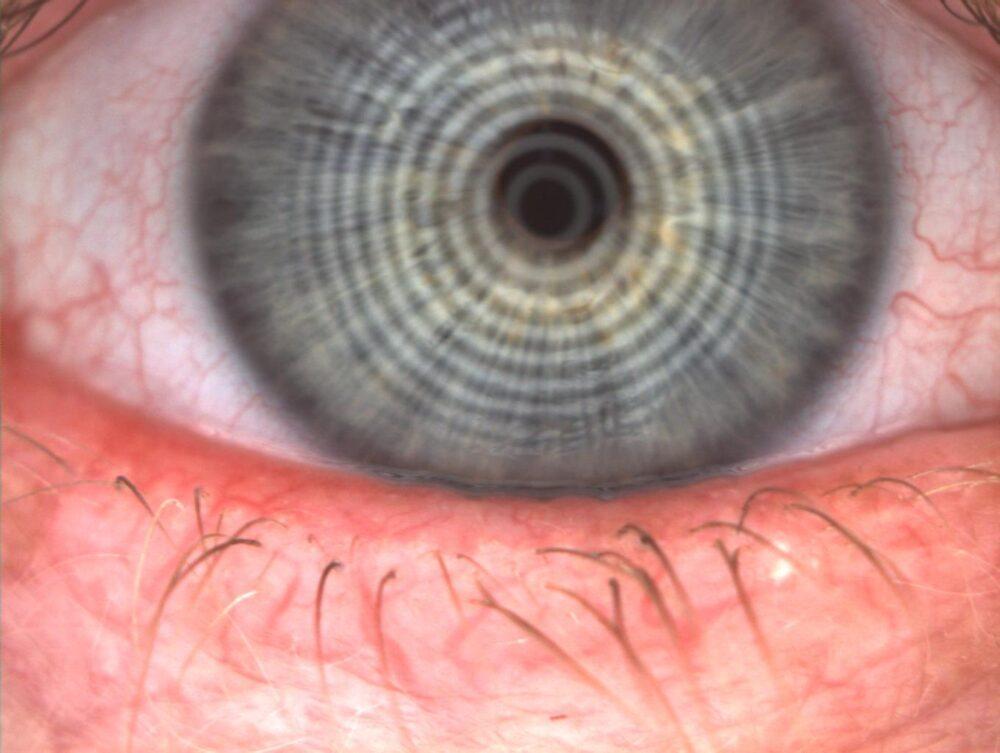Ocular Rosacea
Ocular rosacea is a condition where the eyes become inflamed and irritated. It often occurs in people who have the skin condition rosacea, although this is not always the case.
Typical symptoms of rosacea include a red appearance to the skin, pimples and visible blood vessels.
In this article, we’re going to take a look at the symptoms and causes of ocular rosacea and know more about the treatments – including self-help – available.
Symptoms of Ocular Rosacea
It’s worth knowing that you may experience the symptoms of ocular rosacea before the skin condition rosacea, or at the same time or later.
You may also have ocular rosacea symptoms without being affected by rosacea relating to the skin.

Symptoms of ocular rosacea include:
- Red, irritated, itchy, dry or watering eyes
- Dilated blood vessels in the whites of your eyes
- A feeling of grittiness or having something stuck in your eye (foreign body sensation)
- Sensitivity to light (known as photophobia)
- Blurred vision
- Redness and swelling around your eyelids and at the base of your eyelashes
- Other issues to do with your eyes – for example, blepharitis (inflammation of the eyelids), conjunctivitis (inflammation of the outer layer of the white part of the eye and the inside of the eyelid), chalazions (swellings within the eyelid) or styes, (swellings on the edge of the eyelid)
Complications
Severe ocular rosacea may result in your cornea (the transparent front part of your eye) being inflamed (this is known as keratitis). This, in turn, may lead to a corneal ulcer, which can cause pain, discomfort and blurred vision.
Keratitis and/or corneal ulcers must be treated swiftly to avoid loss of vision or even your eye, so consult your doctor immediately if you suspect you may be affected.
Causes
Doctors don’t yet know for sure the causes behind ocular rosacea, but there are several possibilities.
Ocular rosacea may be hereditary, meaning it’s been passed down in the family. It may also be caused by a reaction to the Demodex mites that live in your eyelash follicles or the bacteria Helicobacter pylori that also causes tummy upsets. The microbiome on your skin and in your gut may also contribute.
There are also a number of possible triggers for an attack of ocular rosacea. These include:
- Consuming hot or spicy food or drinks
- Drinking hot tea or coffee
- Consuming alcohol
- Being out in particularly hot, cold, sunny or windy conditions
- Practicing strenuous sports
- Taking hot baths or saunas
- Experiencing episodes of emotion such as anger, embarrassment or stress
Who Is More at Risk of Ocular Rosacea?
Ocular rosacea tends to affect adults between the ages of 30 and 50. It’s common in people who have the skin condition rosacea, but people may have one without the other.
Learn more about how to reduce your risk of Ocular Rosacea via Cleveland Clinic
What Treatments Are Available?
If you think you might have ocular rosacea, then you should consult your doctor. They will be able to take a look at your symptoms, diagnose you and suggest an appropriate course of treatment.
While there’s no cure for ocular rosacea, there are several treatments available to help manage and control the symptoms. These include treatments for your skin and overall health including:
Eyelid Hygiene Routine
Follow a regular eyelid hygiene routine at home to help soothe irritated eyes. Soak Q-tips or a washcloth in an eyelid cleansing product. Then gently remove any debris from the eyelid and surrounding area.
You can also apply a warm compress for a few minutes to closed eyes for relief from symptoms.
Steroid Treatment
Your doctor may prescribe a short course of eye drops or ointment containing steroids to reduce any swelling or redness. Steroids should not be used for long periods of time, as they can lead to cataracts and glaucoma.
Antibiotic Treatment
Oral antibiotics are another ocular rosacea treatment option. They help to reduce the bacteria that may cause symptoms and treat infections. These may be used for a period of 6-12 weeks and then reduced over a period of a couple of months.
Intense Pulsed Light
Intense Pulsed Light is where flashes of light are applied to the face and skin. IPL helps to seal leaky blood vessels formed by Ocular Rosacea. It also helps to switch on the Meibomian Glands so they are younger and more active.
Treatments for Dry Eyes Triggered by Ocular Rosacea
Dry eyes is a common symptom of ocular rosacea. Fortunately, there are options available to help relieve this uncomfortable symptom:
- Your doctor may prescribe you artificial tears to help relieve your dry eyes.
- Omega-3 fatty acid supplements can also help. They stimulate the meibomian glands located along the edges of your eyelids, which produce oil to keep your eyes lubricated.
- Prescription anti-inflammatory drops may help to keep inflammation down in your eyes. Learn more here
Other Treatments
You may be advised not to wear contact lenses, as they can irritate the eyes.
You should also avoid triggers that can set off ocular rosacea symptoms.
For some people, this can mean avoiding alcohol or spicy foods. Others may be triggered by excessive exercise, so they should cut back on their physical activity.
Empowering Yourself to Manage Ocular Rosacea
If you recognize the symptoms of ocular rosacea, don’t despair. The first step is to visit your doctor, who will be able to give you a definitive diagnosis.
Know that there are several options for treatment to relieve the symptoms and that many patients are able to keep their ocular rosacea under control.
Reading up on the condition and knowing what you can do to help yourself is a powerful way to manage the signs and symptoms of ocular rosacea.

